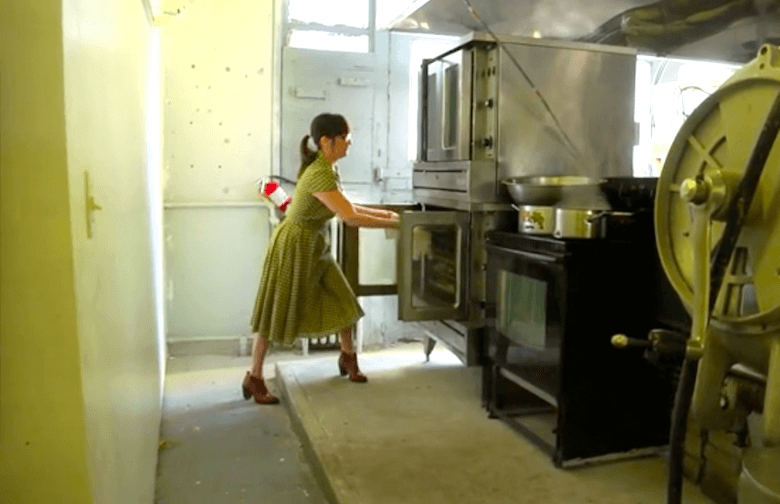Rachael Mamane started her company Brooklyn Bouillon as an answer to a seemingly simple question: What happens to animal bones after slaughter? Once Mamane learned that bones were often ending up in the incinerator another question emerged: How can the bones be used to reduce waste?
The answer came to her in long-simmered broths and stocks—products that minimize food waste while creating a secondary economy of bones for farmers and ranchers. They tasted great, too: clean, rich flavors of animal and vegetable. Though Brooklyn Bouillon is no longer producing stock (the recent trend in bone broth has drastically increased the price of bones and made her small-batch business model impractical), Mamane has produced something even more extraordinary in her new book Mastering Stocks and Broths: A Comprehensive Culinary Approach Using Traditional Techniques and No-Waste Methods. From history to science to culture to recipes, it’s a nose-to-tail guide to stock, broth, and their many amazing uses.
I talked with Rachael about how she came to write her book, what she thinks of the bone broth trend, and how to use stock and broth in the summer.
Edible Brooklyn: How did you decide to write this book?
Rachael Mamane: Liza de Guia [of Food Curated] wanted to do a video on Brooklyn Bouillon. I was a little reluctant; I said, “It’s just stocks,” and she said “But it’s a really good story.” So we did the video and a few months later she came to me and said, “The New York Times blog wants to put it up.” And we saw an enormous grassroots impact as a result of her show: people were really into it. I got an email from McKenna Goodman at Chelsea Green Publishing, over the course of the year we went back and forth as pen pals, figuring out what the book could be. And over that time I realized I didn’t want to write a book about the trend of bone broth, I wanted to give the subject of stock and broth the objectivity I didn’t feel was present in the market.

EB: Bone broth has become incredibly popular over the last number of years. What do you think of this trend?
RM: I’m excited that people are drinking bone broth. I’m thrilled that farmers have a way to sell their bones. What I don’t like is that there’s bad nutritional information on the market and it trends in a way that contradicts conscious meat-eating. If a person believes in the nutritive effects of bone broth (that it will heal a hole in their gut or cure typhus, like they did in 1800s France), if they’re drinking 4-6 cups of bone broth a day, in my opinion that’s not necessarily being mindful of your consumption. But I have bone broth recipes in the book, and I don’t want to alienate people who drink bone broth.
EB: You don’t have formal culinary training, but the recipes in this book are creative and diverse—they run the gamut from comfort food to classical French dishes. How did you approach recipe development for this book?
RM: Whatever recipe testing I needed to do was built on years and years of cooking, and I was confident about the processes and content. For each category, starting with animal and going to vegetable, I really wanted recipes that were approachable. If you’re going to spend time making a stock the right way, then I assume on behalf of the reader audience that they also have the patience for cooking slow meals as well. But I didn’t want every recipe to be impossible; I wanted to be ambitious but not intimidating.
When I was going through the animal based dishes I wanted to do an appetizer that made use of off cuts, like pâté, and then a classic soup or stew, and then I tried to represent the whole animal. Like with choucroute, I just tell what kind of sausage is represented—if you have access to the whole animal you’re going to know how to process the animal to get those cuts. But you can also just go to your farmer and get the cuts you need.
EB: Most people think of stock and broth as cold weather food. How do you recommend making the most of stock and broth in the warmer months?
RM: Stock is a fundamental aspect of cooking. Summertime is a great time to focus on vegetables stocks, because there’s a bountiful harvest. I look at an ingredient and think, “How can I get the most flavor out of that?” I once ran a value added test kitchen for a farm, and they had an excess of heirloom tomatoes every year. And we looked at the tomato we said, “What can we do with these?” and we made sauce. And then we had tomato water. So we reduced it and we made Bloody Mary mix. Or you can make ketchup. Or tomato pesto. It was the same thing I’m trying to do with bones: to start with a whole vegetable or fruit and see how many products I can get out of it. And sometimes it only takes 2 or 3 ingredients and a little bit of time.
EB: Brooklyn Bouillon is on hiatus now; what are you up to these days?
I’ve started to put my attention on infrastructure. My colleague and I are working on a food systems consulting firm and fund that helps small producers fill in the gaps wherever they are in business so they can scale according to their local economy. In the next year we aim to open a space in Kingston, NY: a food hall upstairs and a fantastic modular incubator kitchen below. And because it’s so close to farm-to-table co-packers, the hope is that small producers can come in and test market in the retail space above and then, if they’re primed for growth, they can fold into the co-packer model. And when it happens, then Brooklyn Bouillon will have a home!



